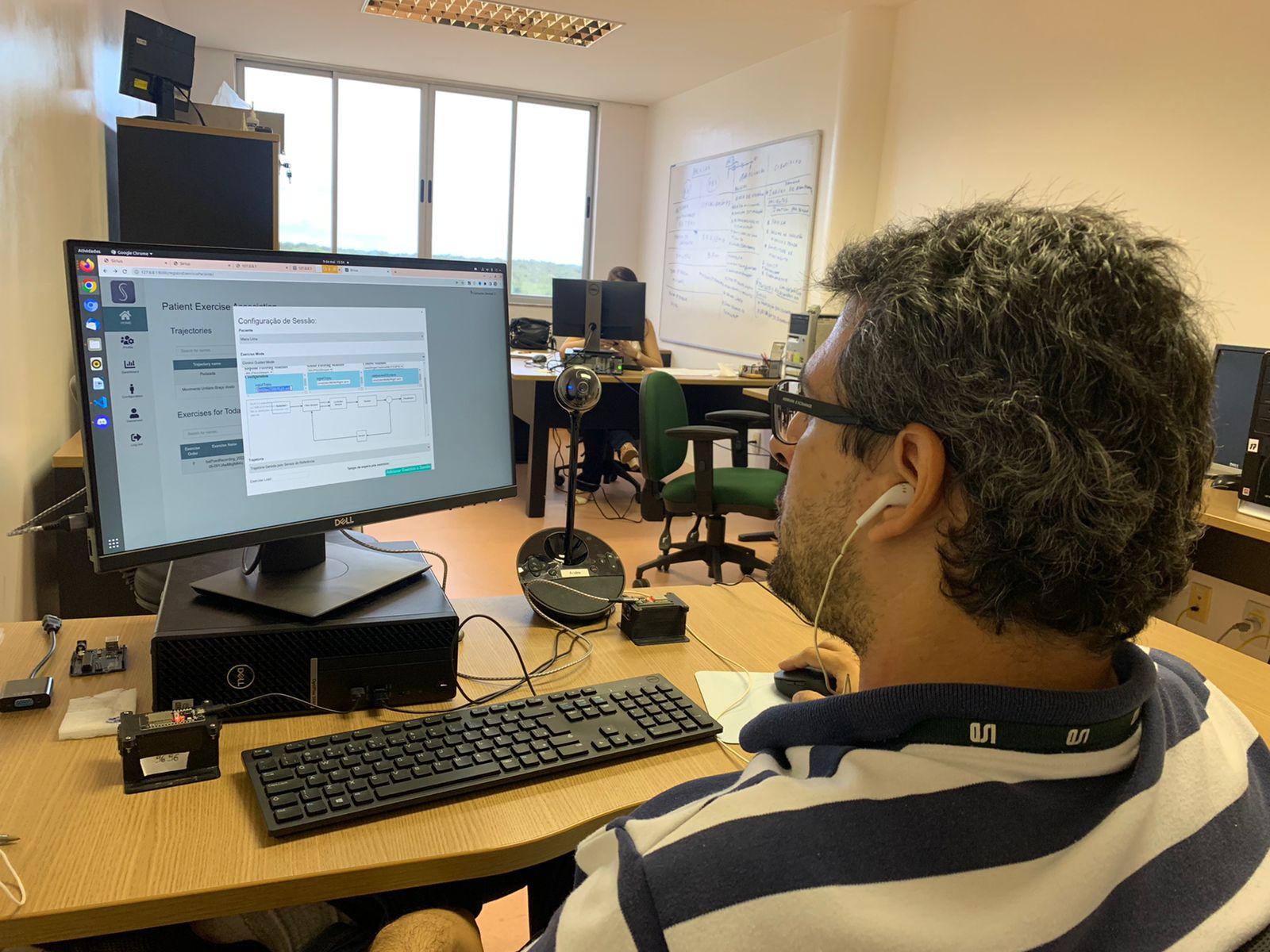Creating a system capable of producing controlled movements to aid in the rehabilitation process, based on computer commands, is the goal of the team of Neuroengineering students coordinated by professor-researcher André Dantas, from the Santos Dumont Institute (ISD), in Macaíba (RN). Given the high costs of mechanical devices, such as exoskeletons, used to rehabilitate individuals with spinal cord injuries, for example, the researcher turned to functional electrostimulation, one of the most widely used approaches in the world to help in the recovery of movements. The project, which has several stages, took another step towards completion with a scientific article published in the international journal Sensors. Written by the master in Neuroengineering from ISD, Túlio Fernandes de Almeida and the master's student in the same area, Luiz Henrique Bertucci, the article “Development of an IoT Electrostimulator with Closed-Loop Control” [“Development of an IoT electrostimulator with closed-loop control”, in free translation] was published in the first week of May by the journal, and brings innovations that could contribute to the advancement of rehabilitation techniques and methods.
Functional electrostimulation is a form of treatment that uses a low-frequency electrical current to cause weakened or paralyzed muscles to contract. It is often used by physiotherapists on patients who have suffered spinal cord injuries, strokes, and other traumas and conditions that may affect movement. Although it is a technique widely used in clinics, the work developed by ISD researchers brings an innovation: the ability to control and precisely determine the desired movement by computer.
“One of the difficulties we face when working on the rehabilitation process is executing functional movements. When we have a spinal cord injury, most of the time, we lose movement and the ability to activate muscle control. So, to restore muscle health and bone integrity, it is important to perform functional movements,” explains Túlio. With the device developed by the researchers, this will not be a problem: the idea is that physiotherapists will be able to easily insert rehabilitation protocols with specific movements and exercises, which can be easily accessed within the system and used in rehabilitation. “With the support of other techniques, we believe that this will be able to reproduce even more complex movements, such as cycling and walking, for example,” adds the neuroengineer.
With a background in Computer Engineering and Electrical Engineering, professor-researcher André Dantas reports that the technology development process has advanced, but is not yet complete. The first step taken came with the publication of the article resulting from Túlio's Master's research, in 2021, which brought the development of sensors capable of measuring joint angles.
The article entitled “Development of low-cost open-source measurement system for joint angles estimation” [“Development of a low-cost open-source measurement system for joint angle estimation”, in free translation], was also published in the journal Sensors, and brought the resource that is widely used in the production of animated films to give accuracy to movements, to the scope of rehabilitation, focusing on aspects such as low cost and ease of use.
Using the sensors, they were able to collect information about joint movements and add it to the electrostimulation system, which allowed them to issue simple commands via the computer to perform functional movements, part of the project by electrical engineer Luiz Henrique Bertucci. Tests conducted on healthy individuals, André reports, were promising. “The idea is that we can now establish an exercise and make the joint movement follow the exercise determined by the professional.”
Internet of Things
An important tool in the creation of the device was the Internet of Things (IoT). The Internet of Things consists of a network of physical objects capable of collecting and transmitting data, and allows everyday objects to share information and generate feedback through an Internet connection. “This was essential for us to be able to develop a device that communicates in real time with the interface and sensors, generating work with integrated control,” says Luiz Bertucci.
Thanks to this method, the device can create a rehabilitation environment in which exercises are measured in real time using a sensor. “Knowing exactly what movements are performed allows us to control this therapy, improving the quality of the results for the patient,” adds the electrical engineer.
Multidisciplinary work
The work developed by the researchers was the result of interdisciplinarity. Physiotherapists, electrical engineers, biomedical engineers and computer engineers came together to try to find a common language in order to bring the problems identified in the clinic to the laboratory, and to be able to produce a response using different engineering and computer techniques.
In the case of Túlio, who is a physiotherapist by training, it was necessary to develop skills that he had not previously mastered, such as programming and specific knowledge about hardware, for example. “Sometimes we have this meeting but we are unable to speak in similar languages about what rehabilitation needs and what computing can add. So, by knowing a little more about each area, we are able to speak a common language and develop solutions”, he states.
One of the main objectives of the Master's program in Neuroengineering at the Santos Dumont Institute, which has students from different areas, such as Speech Therapy, Physiotherapy, Occupational Therapy, Computer Science and several areas of Engineering, is to create a common knowledge base so that these different fields are able to communicate in the effort to develop increasingly complete solutions for the population.
To read the full article, go to:
Text: Mariana Ceci / Ascom – ISD
Photograph: Mariana Ceci / Ascom – ISD
Video: Mariana Ceci / Ascom – ISD
Communication Office
comunicacao@isd.org.br
(84) 99416-1880
Santos Dumont Institute (ISD)
It is a Social Organization linked to the Ministry of Education (MEC) and includes the Edmond and Lily Safra International Institute of Neurosciences and the Anita Garibaldi Health Education and Research Center, both in Macaíba. ISD's mission is to promote education for life, forming citizens through integrated teaching, research and extension actions, in addition to contributing to a fairer and more humane transformation of Brazilian social reality.















